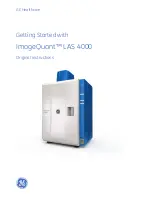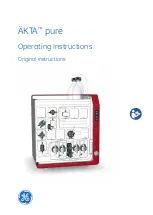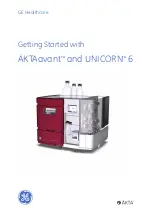
Refrigerated Centrifuge with Heating System Sigma 3-30KHS
2 Layout and mode of operation
Version 09/2014, Rev. 1.15 of 08/05/2020
• sb
13 / 91
Translation of the original operating manual, part no. 0701402
Pos : 21 / 100 Sigma/ 100 BA Zentrif ugen Sigma (Standar dmodule)/ 020 Auf bau und Wirk ungsw eise/020-0020 Wirkungsweis e---------------------------------------------------------- @ 26\mod_1405318984194_68.docx @ 191807 @ 2 @ 1
→
2.2
Mode of operation
Pos : 22 / 100 Sigma/ 100 BA Zentrif ugen Sigma (Standar dmodule)/ 020 Auf bau und Wirk ungsw eise/020-0020-0010 Prinzi p der Z entrif ugati on @ 26\m od_1405318985448_68. docx @ 191821 @ 3 @ 1
→
2.2.1
Centrifugation principle
Centrifugation is a process for the separation of heterogeneous mixtures of
substances (suspensions, emulsions, or gas mixtures) into their
components. The mixture of substances, which rotates on a circular path, is
subject to centripetal acceleration that is several times greater than the
gravitational acceleration.
Centrifuges use the mass inertia inside the rotor chamber for separating the
substances. Due to their higher inertia, particles or media with a higher
density travel outwards. In doing so, they displace the components with a
lower density, which in turn travel towards the centre.
The centripetal acceleration of an object inside a centrifuge, as the effect of
centripetal force, depends on the distance between the object and the axis
of rotation as well as on the angular velocity. It increases linearly as a
function of the distance with regard to the axis of rotation and quadratically
as a function of the angular velocity. The bigger the radius in the rotor
chamber is and the higher the speed is, the higher the centripetal
acceleration is. However, the forces acting on the rotor also increase.
Pos : 23 / 010 U nivers almodule/ Leerz eile @ 0\m od_1202116244500_0. doc x @ 114 @ @ 1
Pos : 24 / 100 Sigma/ 100 BA Zentrif ugen Sigma (Standar dmodule)/ 020 Auf bau und Wirk ungsw eise/020-0020-0020 Anw endungsbereic h @ 26\m od_1405318986763_68.docx @ 191835 @ 3 @ 1
Das
→
2.2.2
Area of application
Depending on the area of application of the centrifuge and also on the
particle size, solids content, and volume throughput of the mixture of
substances that is to be centrifuged, there are different types of centrifuges.
The areas of application go from household use as a salad spinner or
honey separator up to specialised technical applications in the clinical,
biological, or biochemical context:
• For numerous clinical examinations, cellular material must be separated
from the liquid to be analysed. The normal separation process can be
sped up considerably by using laboratory centrifuges.
• In the metal-working industry, centrifuges are used for separating oil
from metal cuttings. Dairies use centrifuges in order to separate cow’s
milk into cream and low-fat milk.
• Particularly big centrifuges are used in the sugar industry for separating
the syrup from the crystalline sugar.
• Ultracentrifuges are predominantly used in biology and biochemistry in
order to isolate particles, e.g. viruses. They are specifically designed for
high speeds up to 500,000 rpm. The rotor moves in a vacuum in order
to avoid air friction.
Pos : 25 / 010 U nivers almodule/ Seitenw ec hsel @ 0\m od_1202116244312_0. doc x @ 105 @ @ 1














































